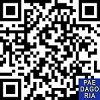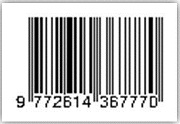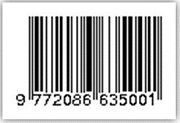MAPPING OF HUMOR DISCOURSE IN SOCIAL MEDIA WITH ORIENTATION OF CHARACTER EDUCATION
Abstract
Abstrak: Artikel ini bertujuan memetakan wacana humor di media sosial facebook yang berorientasi pendidikan karakter. Pendekatan penelitian ini adalah deskriptif kualitatif. Datanya berupa wacana humor berkarakter di media sosial. Adapun sumber datanya berupa wacana humor di media sosial. Data-data penelitian ini dikumpulkan dengan teknik dokumentasi dan simak yang dilanjutkan dengan teknik catat. Analisis data menggunakan metode padan referensial. Hasil penelitian menunjukkan terdapat delapan jenis humor di media sosial yang meliputi: (1) humor bidang pendidikan, (2) transportasi, (3) keluarga, (4) kesehatan, (5) agama, (6) ekonomi, (7) politik, dan (8) fabel. Jenis-jenis humor tersebut dapat dijadikan sebagai sumber nilai pendidikan karakter. Adapun nilai pendidikan karakter dalam wacana humor tersebut meliputi karakter visioner, kedisiplinan, kebahagiaan, tanggung jawab, sikap saleh, daya usaha, dan karakter rendah hati. Hal ini menunjukkan wacana humor memiliki nilai pendidikan karakter yang beragam. Humor berkarakter tersebut berpotensi dijadikan sebagai sumber bahan ajar di sekolah.
Abstract: This article aims to map the discourse of humor on Facebook social media with orientation towards character education. The research approach is descriptive qualitative. The data is in the form of humorous discourse on the social media. The data source is humorous discourse found on the social media. The data of this study were collected through documentation and observation techniques followed by note taking. Data analysis utilizes referential identity method. The results showed that there were eight types of humor in social media which include: (1) humor in education, (2) transportation, (3) family, (4) health, (5) religion, (6) economy, (7) politics, and (8) fable. These types of humor can be used as a source of value for character education, including visionary character, discipline, happiness, responsibility, godly attitude, effort, and humble character. This shows that the discourse of humor has a diverse character education value. Humor with such character has the potential to be a source of teaching material in schools.Keywords
Full Text:
Download [PDF]References
Beard, A. (2014). Leading with humor. Harvard Business Review, 92(5), 130–131. https://hbr.org/2014/05/leading-with-humor
Creswell, J. W. (2014). Research design: Qualitative, quantitative, and mixed methods approaches. America: United States of America.
Dai, J. (2018). Interpretation of Humor between Chinese and Americans from the Angle of Culture in Friends. Journal of Language Teaching and Research, 9(6), 1356–1361. http;//dx.doi.org/10.17507/jltr/0906/27
Deen, P. (2018). Senses of Humor as Political Virtues. Metaphilosophy, 49(3), 371–387. https://doi.org/10.1111/meta.12297
Ilmi, D. (2015). Pendidikan Karakter Berbasis Nilai-nilai Kearifan Lokal Melalui Ungkapan Bijak Minangkabau. ISLAM REALITAS: Journal of Islamic & Social Studies Vol., 1(1), 45–54. http;//dx.doi.org/10.30983/islam realitas/v1i.7
Isik, U., & Cengiz, R. (2018). The Relationship between Humor Styles and Five Factor Personality Traits of Physical Education and Sports Students. Universal Journal of Educational Research, 6(8), 1811–1818. https://doi.org/10.13189/ujer.2018.060826
Ivy, L. L. (2013). Using humor in the classroom. The Education Digest, 79(2), 54. http://www.nea.org/tools/52165.htm
Kazarian, S. S., & Martin, R. A. (2004). Humour styles, personality, and well‐being among Lebanese university students. European Journal of Personality, 18(3), 209–219. https://psycnet.apa.org/record/2004-14128-004
Kirana, C., Sumarmal, & Sulistyo, E. T. (2018). Tuturan Ekspresif Dalam Humor Politik Republik Sentilan Sentilun Di Metro Tv ( Tinjauan Pragmatik ). Kembara, 4(1), 19–21. http://ejournal.umm.ac.id/index.php/kembara/article/view/5324
Lesmana, M. (2014). Teks-teks Humor Politik di Indonesia : Sekedar Hiburan atau Sekaligus Kritikan ? SUSURGALUR: Jurnal Kajian Sejarah & Pendidikan Sejarah, 2(1), 91–100. https://scholar.ui.ac.id/en/publications/teks-teks-humor-politik-di-indonesia-sekedar-hiburan-atau-sekalig
Machfiroh, R., Sapriya, S., & Komalasari, K. (2018). Characteristics of Young Indonesian Citizenship in the Digital Era. Advances in Social Science, Education and Humanities Research, 251(Acec), 5–7. https://doi.org/10.2991/acec-18.2018.2
Mulyani, S. (2005). Humor dalam majalah Djaka Lodang (Kajian Bentuk Humor). LITERA, 4(1), 77–87.
Puspitasari, I. N. N. (2017). Menuju Sekolah Ramah Anak Holistik-Integratif Melalui Learning Organization. Madrasah, 9(2), 107–129. https://doi.org/10.2991/acec-18.2018.2
Rafiek, M. (2018). Humor Dalam Madihin John Tralala Dan Hendra (Kajian Jenis Humor Perspektif Veatch, Gruner, Dan Hobbes). Bahasa Dan Seni : Jurnal Bahasa, Sastra, Seni, Dan Pengajarannya, 46(1), 57–72. https://doi.org/10.17977/um015v46i12018p057
Rahardi, R. K. (2006). Dimensi-Dimensi Kebahasaan: Aneka Masalah Bahasa Indonesia Terkini. Erlangga.
Sanchez, A. C., Javier, L., & Magro, C. (2018). Humour in the teaching of English and German equivocal words. Cypriot Journal of Educational Sciences, 13(4), 645–653. https://eric.ed.gov/?q=source%3A%22Cypriot+Journal+of+Educational+Sciences%22&pg=3&id=EJ1202228
Setiawan, A. (1990). Teori Humor. Jakarta: Majalah Astaga, 3(3), 34–35.
Sudaryanto. (2015). Metode dan Aneka Teknik Analisis Bahasa Pengantar Penelitian Wahana Kebudayaan secara Linguistis. Yogyakarta: Sanata Dharma University Press.
Sukarno. (2015). Politeness Strategies in Responding to Compliments in Javanese. Indonesian Journal of Applied Linguistics, 4(2), 91–101. https://doi.org/http://dx.doi.org/10.17509/ijal.v4i2.686
Sukerti, G. N. A., & Basthomi, Y. (2017). Laughter After Tears: Sitting For American Humors In Indonesian Sofas (Subtitling Humors of a Tv Serial Friends). Bahasa Dan Seni: Jurnal Bahasa, Sastra, Seni Dan Pengajarannya, 44(2), 188–206. https://doi.org/10.17977/um015v44i22016p188
Tojo, H., & Takagi, A. (2017). Trends in Qualitative Research in Three Major Language Teaching and Learning Journals, 2006–2015. International Journal of English Language Teaching, 4(1), 37. https://doi.org/10.5430/ijelt.v4n1p37
Van Dooren, W., Lem, S., De Wortelaer, H., & Verschaffel, L. (2019). Improving realistic word problem solving by using humor. Journal of Mathematical Behavior, 53(June), 96–104. https://doi.org/10.1016/j.jmathb.2018.06.008
Warren, C., Barsky, A., & Mcgraw, A. P. (2018). Humor, Comedy, and Consumer Behavior. Journal of Consumer Research, 45. https://doi.org/10.1093/jcr/ucy015
Wijana, I. D. P. (2018). Exploitation of Pragmatic Aspects in Indonesian Humorous Discourses. Journal of Language and Literature, 17(2), 108–115. https://doi.org/10.24071/joll/2017.170201
Zurqoni, Z., Retnawati, H., Apino, E., & Anazifa, R. D. (2019). Impact of Character Education Implementation: a Goal-Free Evaluation. Problems of Education in the 21st Century, 76(6), 881–899. https://doi.org/10.33225/pec/18.76.881
DOI: https://doi.org/10.31764/paedagoria.v11i2.2491
Refbacks
- There are currently no refbacks.
Copyright (c) 2020 Universitas Muhammadiyah Mataram

This work is licensed under a Creative Commons Attribution-ShareAlike 4.0 International License.
Paedagoria : Jurnal Kajian, Penelitian dan Pengembangan Kependidikan
Fakultas Keguruan & Ilmu Pendidikan | Universitas Muhammadiyah Mataram.
_______________________________________________
 | Paedagoria : Jurnal Kajian, Penelitian dan Pengembangan Kependidikan |
______________________________________________
CURRENT INDEXING:
EDITORIAL OFFICE:


















